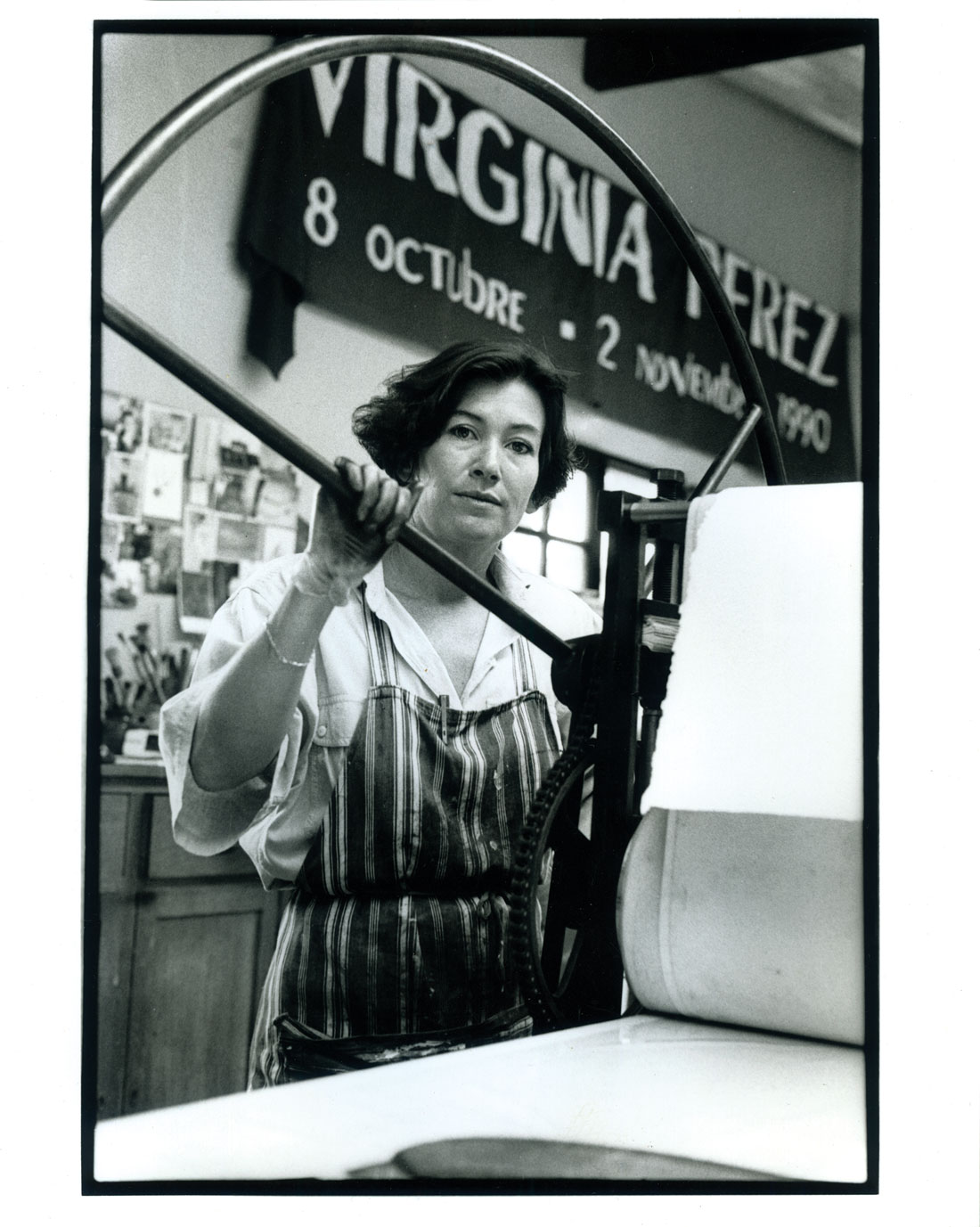Virginia Pérez-Ratton
(1950 – 2010)
Artist, curator and cultural manager, she was the founder and director of the independent project TEOR/éTica, in San José, from 1999 to 2010. She devoted much of her life to research, advocacy and the dissemination of contemporary artistic practices of Central America and the Caribbean.
She got her Licentiate degree in French Literature at the University of Costa Rica (1979), and for nine years she was a teacher in the School of Modern Languages of the Faculty of Humanities. In the early eighties, she left teaching to pursue her own artistic practice and education by attending free workshops in Costa Rica and France. Between 1985 and 1987, she worked in Costa Rica for the Regional Office of the United Nations High Commissioner for Refugees, in the context of an emergency surrounding those displaced by armed conflict in Central America.
Her artistic production started with drawing and then developed into research with experimental techniques involving etching, collage, assemblages and the integration of graphics and objects. Between 1983 and 1995, she developed most of her artistic production and also participated in several exhibitions in Latin America, Europe and Asia. Since the early nineties, Virginia focused her research on everyday objects that carried some emotional memory, as in the collections of china or broken glass (Pecera, 2000-2010); in the sequence of dresses from childhood to adulthood (Hoja de Vida, 1995); or emptied fragments of her own body (Juego de muda incompleto, 1999). The ideas and images of vulnerability, rupture, fragility, as well as the influence of the immediate context and the stereotypes which social structures confer to human relationships, are cross-cutting in her work.
Alongside her work as an artist, at the beginning of the nineties she began to organize exhibitions and graphic art workshops independently, from her own workshop, Atelier de la Tebaida, in Concepción, Tres Ríos (Costa Rica).
In 1994, the same year she won the prize of the Sculpture Biennial of the Costa Rican Brewery, she agreed to be the director of the newly-founded Museum of Contemporary Art and Design (MADC). Thereafter, she began tireless efforts of curatorial and cultural action. From the MADC, Virginia organized over 60 exhibitions in and outside Costa Rica, including the important series MESóTICAS. In her tenure as director, she created, in 1994, the National Board of Curators, led by Rolando Castellón, and the Regional Documentation Center, directed by Luis Fernando Quirós. In coordination with the National Board of Curators, she was in charge of curating the Costa Rican participation in various biennials. In 1998 she was invited by Paulo Herkenhoff to the XXIV São Paulo Biennial, to take over the regional curatorship for Central America and the Caribbean. At the end of that same year, due to disagreements with a new Administration of Culture, she resigned from her position as director of the MADC.
In June 1999 she founded the independent, nonprofit organization TEOR/éTica, along with Rolando Castellón, Paulo Herkenhoff, Bruno Stagno, and Claude Tournon. The project was set forth with the aim to continue studying regional artistic practices and collaborate with research and dissemination of recent work in the area. With a small building for exhibitions and a library open to the public, TEOR/éTica gradually became a meeting and sharing place for active agents of contemporary art in the region. From that platform, and with the support of her team, she curated numerous exhibitions, activities, workshops and seminars, and she developed a strong publication program. In 2000, TEOR/éTica organized Temas Centrales, the first regional symposium on artistic practices and contemporary curatorial possibilities, which brought together artists, curators and researchers of the region in San José, and marked a milestone in terms of networking and research links in Central America and the Caribbean. In 2006, she curated, along with Tamara Díaz Bringas, the huge international exhibition Estrecho Dudoso (Doubtful Strait), which took place in several venues and public spaces of San José and was made up of four collective and two monographic shows and had the participation of nearly eighty artists and collectives
Based on intensive research and the linking of critical agents of regional art and thought, Virginia managed in these years to articulate and demonstrate the contemporary art of Central America and the Caribbean, both in the context of the region and in the global art circuits. In addition to her important work as head of TEOR/éTica, Virginia curated numerous international exhibitions, and she actively participated in symposia and lectures on art theory, globalization and cultural perspectives. Highlights include her participation in the International Jury of the 49th Venice Biennale in 2001; attendance to Platform III of Documenta 11, upon invitation of Okwui Enwezor in 2002; the conferences “Migraciones desde y hacia el Caribe,” presented that same year at ARCO; or her participation in Global Feminisms in 2007, where she presented the paper “Entre íntimo y político: artistas centroamericanas.” In 2009, Costa Rica’s Ministry of Culture gave her the Magón Award in recognition of her work as curator and promoter of contemporary art in Costa Rica, as well as Central America and the Caribbean.
In 2010, after an intense and long time devoted to research and curatorship, Virginia briefly resumed her artistic work in the workshop. That year, in the project Des Pacio, in San José, her personal exhibit Re-puesta en escena was presented, which included graphic artwork and new versions of some of her works.
In the months before her untimely death, Virginia was preparing an anthology of her texts that will be published by the University of Valencia. These texts, written in the course of her career as a researcher, will be essential for the study of art and critical thought in Central America, in relation to their historical and sociopolitical context.



